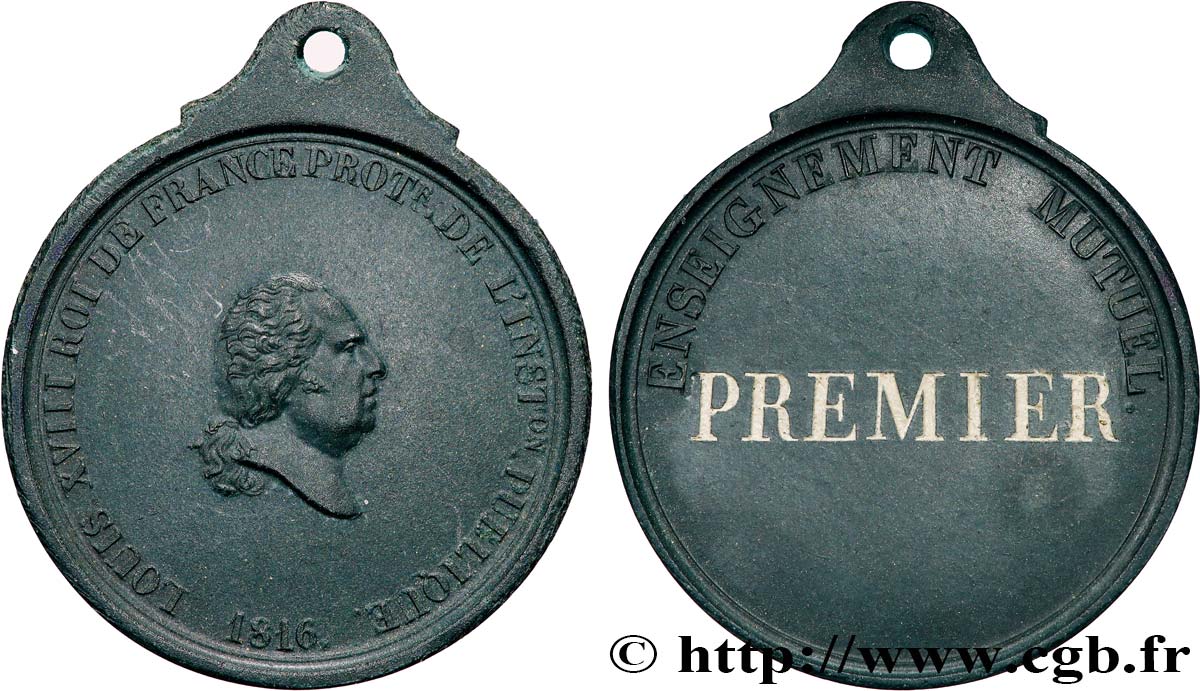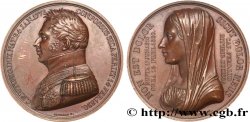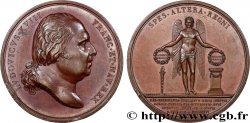Live auction - fme_790017 - LOUIS XVIII Médaille, Enseignement mutuel, Premier
You must signin and be an approved bidder to bid, LOGIN TO BID. Accounts are subject to approval and the approval process takes place within 48 hours. Do not wait until the day a sale closes to register. Clicking on "BID" constitutes acceptance of the terms of use of cgb.fr private live auctions.
Bids must be placed in whole Euro amounts only. The sale will start closing at the time stated on the item description; any bids received at the site after the closing time will not be executed. Transmission times may vary and bids could be rejected if you wait until the last second. For further information check the Live auction FAQ
All winning bids are subject to a 18% buyer’s fee.
All winning bids are subject to a 18% buyer’s fee.
| Estimate : | 120 € |
| Price : | no bid |
| Maximum bid : | no bid |
| End of the sale : | 24 January 2023 18:23:28 |
Type : Médaille, Enseignement mutuel, Premier
Date: 1816
Metal : various
Diameter : 43,5 mm
Orientation dies : 12 h.
Weight : 4,70 g.
Edge : lisse
Puncheon : sans poinçon
Coments on the condition:
Jolie patine d’aspect vert. Très légère usure. Présence de quelques rayures
Obverse
Obverse legend : LOUIS XVIII ROI DE FRANCE PROT.E DE L’INST.ON PUBLIQUE - 1816..
Obverse description : Tête nue à droite de Louis XVIII.
Reverse
Reverse legend : ENSEIGNEMENT MUTUEL // PREMIER.
Reverse description : Légende circulaire et horizontale.
Commentary
Cette médaille semble être en bois durci. Elle a été décernée au Premier de l’enseignement mutuel.
Diamètre sans bélière : 37,5 mm
Le principe de ce qu'on a appelé l'enseignement mutuel consiste « dans la réciprocité de l'enseignement entre les écoliers, le plus capable servant de maître à celui qui l'est le moins » (Joseph Hamel, L'enseignement mutuel, 1818). Bell, qui a importé le système en Europe, en 1798, le définissait avec une précision quelque peu naïve : « La méthode au moyen de laquelle une école tout entière peut s'instruire elle-même, sous la surveillance d'un seul maître ».
cf. http://www.inrp.fr/edition-electronique/lodel/dictionnaire-ferdinand-buisson/document.php?id=3249.
Diamètre sans bélière : 37,5 mm
Le principe de ce qu'on a appelé l'enseignement mutuel consiste « dans la réciprocité de l'enseignement entre les écoliers, le plus capable servant de maître à celui qui l'est le moins » (Joseph Hamel, L'enseignement mutuel, 1818). Bell, qui a importé le système en Europe, en 1798, le définissait avec une précision quelque peu naïve : « La méthode au moyen de laquelle une école tout entière peut s'instruire elle-même, sous la surveillance d'un seul maître ».
cf. http://www.inrp.fr/edition-electronique/lodel/dictionnaire-ferdinand-buisson/document.php?id=3249.








 Report a mistake
Report a mistake Print the page
Print the page Share my selection
Share my selection Ask a question
Ask a question Consign / sell
Consign / sell
 Full data
Full data










